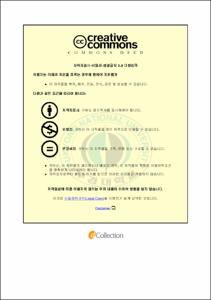부산지역 일부 중학교 급식의 나트륨 함량 및 나트륨 저감화 실천과 방해요인에 대한 영양(교)사 인식조사
- Abstract
- The study examined awareness, practices, and obstruction of the sodium reduction of middle school dietitians in Busan. The study also measured the actual saltiness of middle school foodservice meal, thereby providing data that can serve as a foundation for the improvement in middle school dietitians' dietary behavior and the development of low-sodium menus. 10 middle school were selected in Busan. 146 participants were recruited to complete a survey. One serving of each of 98 menu items was calculated to measure the amount salt, allowing the sodium level to be calculated. Statistical analysis was conducted using SPSS v18.0.
The results of sodium measurement in middle school foodservice meal in the Busan showed that noodles (701.00 mg) had the highest sodium level, followed by one-dish meal 673.89 mg, stews 608.50 mg, broths 603.40 mg, soups 526.69 mg, roasted foods 253.72 mg, kimchies 234.25 mg, fried foods 221.31 mg, hard-boiled foods 216.25 mg, stir-fried foods 206.07 mg, steamed foods 203.10 mg, pan-fried foods 139.20 mg, fresh-vegetables 137.27 mg, salads 113.22 mg, seasoned-vegetables 92.00 mg, boiled-vegetables 92.00 mg, breads 6.29 mg, beverages products 1.11 mg. The results of sodium contents among the one serving of 98 menu was under 999 mg was 4 menu (4.1 %), more than 1,000 mg less than 1,499 mg was 82 menu (83.7 %), over 1,500 mg was 12 menu (12.2 %). Average of sodium contents of one serving of middle school in Busan was 1,269 mg.
In the sample, 146 middle school dietitians responded, and 30s was 72 dietitians (49.3 %), education level is college 81 dietitians (55.5 %), career for more than 5 years to less than 10 years 59 dietitians (40.5 %) were the highest, meals per day number were more than 500 people less than 700 people was 45 dietitians (20.8 %), meals per employee number were more than 160 people less than 180 people was 65 dietitians (44.5 %).
The analysis results were as follows. The average score of awareness of low-sodium diet was 4.20/5.00. 30s (4.19 point) and over 40s (4.31 point) were higher than 20s (4.05 point) of dietitians, showed significantly higher scores (p<0.05). Meals per day number was under 500 people (4.35 point) showed significantly higher scores (p<0.05).
The average score of practice of low-sodium diet was 3.74/5.00, cooking (3.80 point), choice of food (3.77 point), practicing (3.60 point) were higher scores, but no significant difference was shown. In practicing part, meals per day number was under 500 people (3.78 point) showed significantly higher scores (p<0.05) than more than 700 people less than 900 people (3.56 point) and over 900 people (3.43 point). 20s (3.80 point), graduate school (3.76 point), career was over 10 years (3.79 point) of dietitians were higher, but no significant difference was shown. Under 500 people (3.86 point) for meals per day number showed significantly higher scores (p<0.05) than over 900 people (3.69 point) and more than 700 people less than 900 people (3.68 point).
The average score of obstruction of low-sodium diet was 3.58/5.00, and highest the low-sodium products (3.93 point), student (3.88 point), dietitians (3.71 point), facilities (3.12 point), cook (2.86 point), but no significant difference was shown. Over 40s (3.50 point), graduate school (3.54 point), career was under 5 years (3.52 point) of dietitians, but no significant difference was shown. In low-sodium products part, 30s(4.06 point) showed significantly higher scores (p<0.05) than 40s(3.76 point) and graduate school(4.10 point) showed significantly higher scores (p<0.05) than college (3.68 point). Meals per day number were more than 700 people less than 900 people (3.52 point), more than 160 people less than 180 people(3.57 point) of meals per employee number were higher, but no significant difference was shown.
- Issued Date
- 2015
- Awarded Date
- 2015. 2
- Type
- Dissertation
- Publisher
- 부경대학교
- Affiliation
- 부경대학교
- Department
- 교육대학원 영양교육전공
- Advisor
- 류은순
- Table Of Contents
- 목 차
Abstract
Ⅰ. 서론
1. 서언 1
2. 연구의 목적 4
Ⅱ. 이론적 배경
1. 학교급식에서의 나트륨 섭취 실태 5
2. 학교급식 나트륨 저감화 7
가. 영양(교)사의 나트륨 저감화에 대한 인식 7
나. 나트륨 저감화 정책 9
Ⅲ. 연구대상 및 방법
1. 중학교급식의 나트륨 함량 조사 12
가. 연구 대상 및 기간 12
나. 연구 방법 12
2. 영양(교)사의 나트륨 저감화 조사 13
가. 연구 대상 및 방법 13
나. 연구 기간 13
다. 설문지 구성 13
3. 자료 분석 15
Ⅳ. 연구 결과
1. 조사대상 중학교급식소의 메뉴유형 16
2. 중학교급식소 메뉴의 염도와 나트륨 함량 19
가. 메뉴유형에 따른 염도와 나트륨 함량 19
나. 메뉴유형에 따른 나트륨 함량 순위 21
다. 중학교급식소 한 끼에 따른 총 나트륨 함량 분포 25
3. 영양(교)사의 나트륨 저감화 인식 및 실천 조사 29
가. 조사대상자의 일반사항 29
나. 나트륨 저감화에 대한 인식 29
1) 영양(교)사에 따른 나트륨 저감화 인식 29
2) 급식소에 따른 나트륨 저감화 인식 34
다. 나트륨 저감화에 대한 실천 36
1) 영양(교)사에 따른 나트륨 저감화 실천 36
2) 급식소에 따른 나트륨 저감화 실천 41
라. 나트륨 저감화에 대한 방해요인 43
1) 영양(교)사에 따른 나트륨 저감화 방해요인 43
2) 급식소에 따른 나트륨 저감화 방해요인 47
Ⅴ. 요약 50
Ⅵ. 참고문헌 53
Ⅶ. 부록 61
- Degree
- Master
- Files in This Item:
-
-
Download
 부산지역 일부 중학교 급식의 나트륨 함량 및 나트륨 저감화 실천과 방해요인에 대한 영양(교)사 인식조사.pdf
기타 데이터 / 1.1 MB / Adobe PDF
부산지역 일부 중학교 급식의 나트륨 함량 및 나트륨 저감화 실천과 방해요인에 대한 영양(교)사 인식조사.pdf
기타 데이터 / 1.1 MB / Adobe PDF
-
Items in Repository are protected by copyright, with all rights reserved, unless otherwise indicated.